Lose Weight: Workout & Diet Guide

Losing weight can feel like a daunting challenge. Many people struggle with knowing where to begin or how to sustain progress. This comprehensive guide simplifies the process, providing effective workout plans and dietary strategies to help you burn fat and achieve your weight loss goals. This guide incorporates the latest scientific findings and practical advice to make your journey towards a healthier you both manageable and successful.
Understanding Weight Loss Basics
Before diving into specific workouts and diets, it’s crucial to understand the fundamental principles of weight loss. Weight loss fundamentally boils down to creating a calorie deficit, meaning you burn more calories than you consume.
- Calorie Deficit: To lose one pound of fat, you need to burn approximately 3,500 calories. A sustainable approach is aiming for a deficit of 500-750 calories per day, leading to a weight loss of 1-2 pounds per week.
- Metabolism: Metabolism is the process by which your body converts food and drinks into energy. Factors influencing metabolism include age, gender, muscle mass, and activity level.
- Hormonal Balance: Hormones like insulin, cortisol, and leptin play significant roles in weight management. Imbalances can affect appetite, fat storage, and energy levels.
- Macronutrients: Understanding macronutrients—proteins, carbohydrates, and fats—is crucial. Each plays a different role in your body and affects weight loss differently.
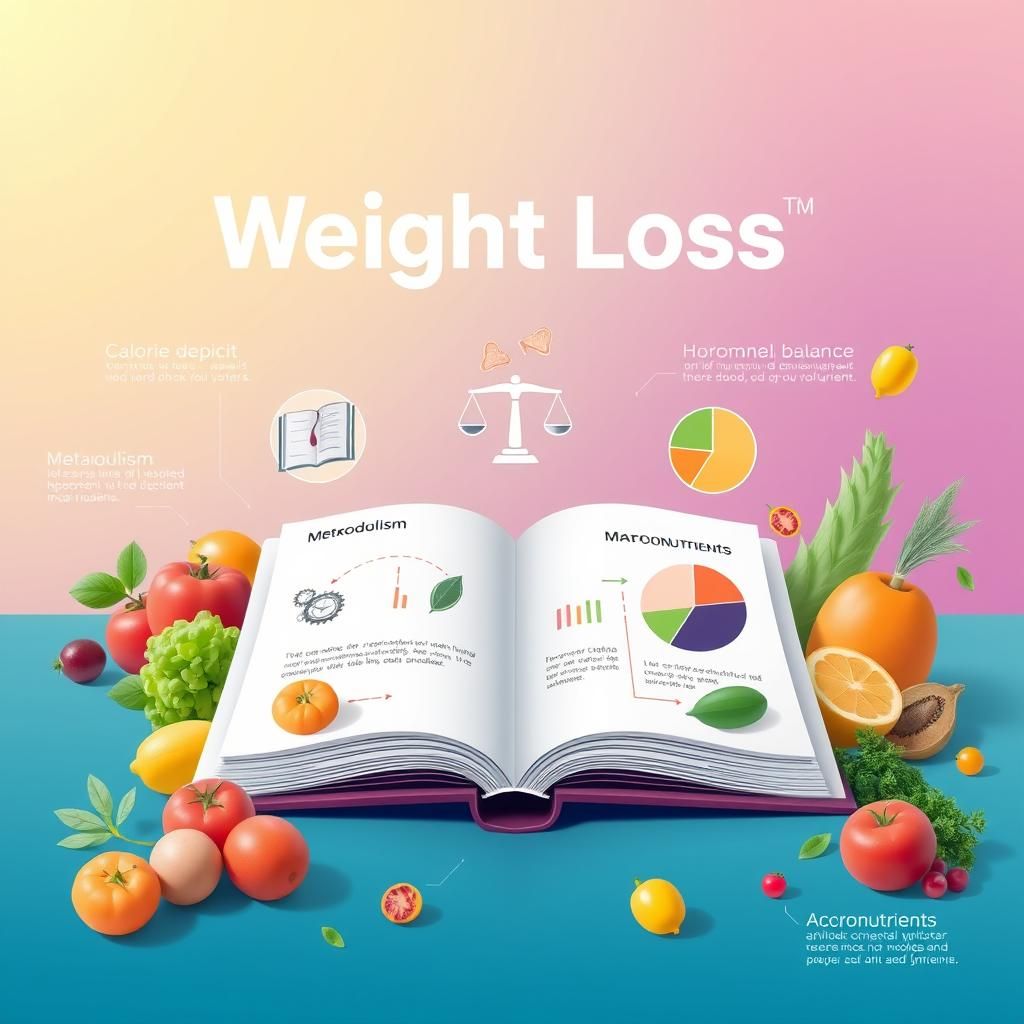
Understanding these basics sets the foundation for a more informed and effective weight loss journey.
Effective Workout Plans for Burning Fat
Exercise is a cornerstone of any successful weight loss program. Combining cardio and strength training is essential for maximizing fat burn and building lean muscle mass.
Cardio Workouts
Cardio exercises are effective at burning calories and improving cardiovascular health.
- High-Intensity Interval Training (HIIT): HIIT involves short bursts of intense exercise followed by brief recovery periods. Studies show HIIT can burn more calories in less time compared to steady-state cardio.

- Example HIIT Workout:
- Warm-up: 5 minutes of light cardio (e.g., jogging or jumping jacks)
- Workout: 30 seconds of sprinting, followed by 30 seconds of walking (repeat 15-20 times)
- Cool-down: 5 minutes of stretching
- Steady-State Cardio: This involves maintaining a moderate intensity level for a longer duration. Examples include jogging, swimming, cycling, and brisk walking.
- Example Steady-State Cardio:
- 30-60 minutes of brisk walking at a pace where you can hold a conversation but are slightly breathless.
- 45 minutes of cycling at a moderate resistance.
- Swimming: A low-impact cardio option that works multiple muscle groups, making it ideal for those with joint issues.
- Example Swimming Workout:
- Warm-up: 5 minutes of light swimming
- Workout: 30 minutes of freestyle, backstroke, or breaststroke
- Cool-down: 5 minutes of relaxed swimming
- Running: A high-impact exercise that burns a significant number of calories. Great for improving cardiovascular health and endurance.
- Example Running Workout:
- Warm-up: 5 minutes of brisk walking
- Workout: 20-40 minutes of running at a moderate pace
- Cool-down: 5 minutes of walking and stretching
Strength Training
Strength training is crucial for building muscle mass, which helps increase your metabolism and burn more calories even at rest.
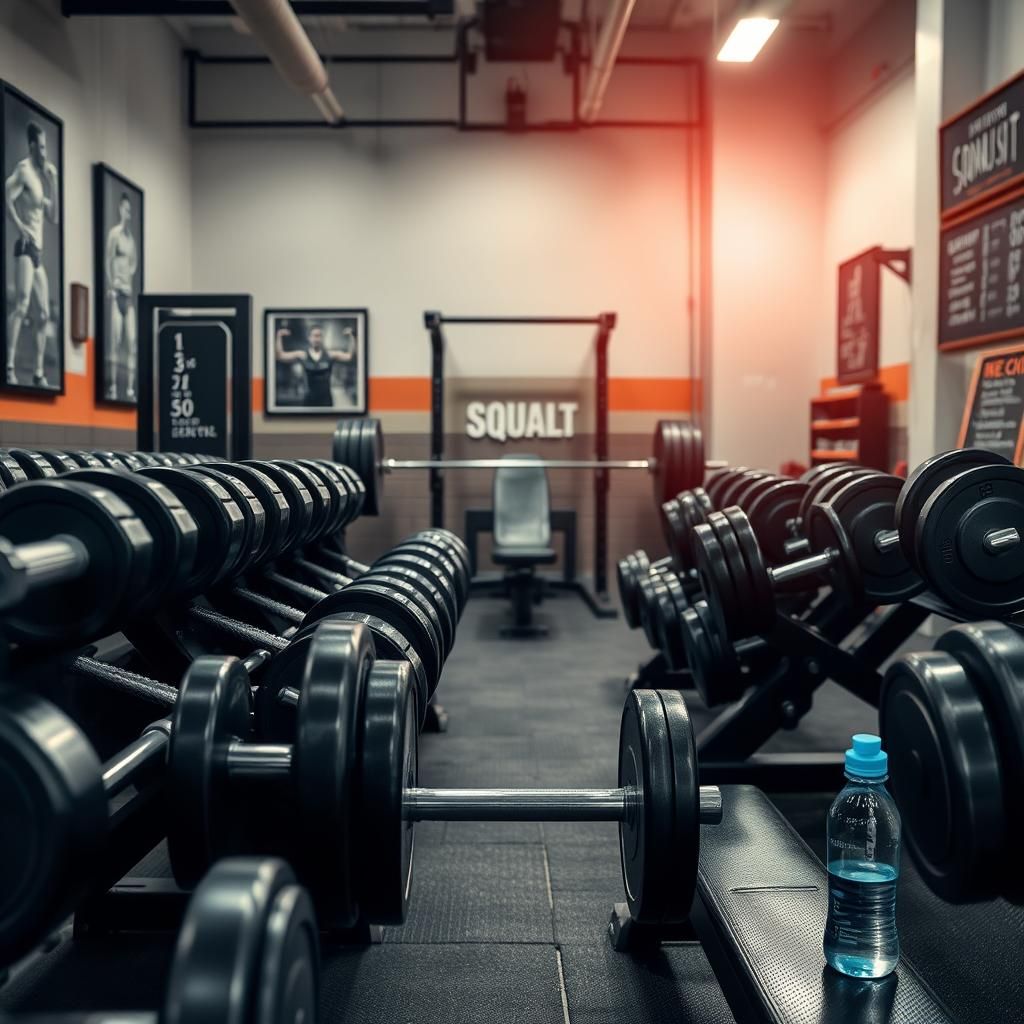
- Compound Exercises: These exercises work multiple muscle groups simultaneously, maximizing calorie burn and muscle growth. Examples include squats, deadlifts, bench presses, and overhead presses.
- Example Compound Exercise Workout:
- Squats: 3 sets of 8-12 reps
- Deadlifts: 1 set of 5 reps, 1 set of 3 reps, 1 set of 1 rep (increase weight each set)
- Bench Press: 3 sets of 8-12 reps
- Overhead Press: 3 sets of 8-12 reps
- Isolation Exercises: These focus on specific muscle groups, helping to improve muscle definition and strength. Examples include bicep curls, tricep extensions, and calf raises.
- Example Isolation Exercise Workout:
- Bicep Curls: 3 sets of 10-15 reps
- Tricep Extensions: 3 sets of 10-15 reps
- Calf Raises: 3 sets of 15-20 reps
- Bodyweight Exercises: Convenient and effective, bodyweight exercises can be done anywhere. Examples include push-ups, lunges, planks, and burpees.
- Example Bodyweight Workout:
- Push-ups: 3 sets of as many reps as possible
- Lunges: 3 sets of 10-12 reps per leg
- Plank: 3 sets, holding for 30-60 seconds each
- Burpees: 3 sets of 10-15 reps
- Workout Schedule:
- Monday: Strength Training (Compound Exercises)
- Tuesday: Cardio (HIIT)
- Wednesday: Rest or Active Recovery (e.g., Yoga, Light Stretching)
- Thursday: Strength Training (Isolation Exercises)
- Friday: Cardio (Steady-State)
- Saturday: Full Body Bodyweight Circuit
- Sunday: Rest
Diet Strategies for Maximum Fat Burn
While exercise is important, diet plays an even larger role in weight loss. Focusing on whole, unprocessed foods and managing portion sizes is key.
Understanding Macronutrients
Balancing your macronutrient intake is essential for optimizing weight loss and maintaining overall health.
- Protein: Crucial for building and repairing muscle tissue, protein also helps you feel fuller for longer, reducing overall calorie intake. Aim for 0.8-1 gram of protein per pound of body weight.

- Sources of Protein: Lean meats (chicken, turkey, fish), eggs, dairy (Greek yogurt, cottage cheese), legumes (beans, lentils), tofu, and protein supplements.
- Carbohydrates: Your body’s primary source of energy. Focus on complex carbohydrates, which are digested more slowly and provide sustained energy.
- Sources of Carbohydrates: Whole grains (brown rice, quinoa, oats), fruits, vegetables, and legumes.
- Fats: Important for hormone production and overall health. Focus on healthy fats, such as monounsaturated and polyunsaturated fats.
- Sources of Healthy Fats: Avocados, nuts, seeds, olive oil, and fatty fish (salmon, mackerel).
Creating a Calorie Deficit
As mentioned earlier, creating a calorie deficit is crucial for weight loss. Here’s how to do it effectively:
- Calculate Your Daily Calorie Needs: Use an online calculator or consult with a registered dietitian to determine your baseline calorie needs.
- Track Your Food Intake: Use a food diary or a tracking app (MyFitnessPal, Lose It!) to monitor your calorie and macronutrient intake.
- Portion Control: Use smaller plates, measure your food, and avoid eating directly from large containers.
- Mindful Eating: Pay attention to your hunger cues and eat slowly, savoring each bite.

Sample Meal Plans
Here are sample meal plans to give you an idea of how to structure your diet for weight loss.
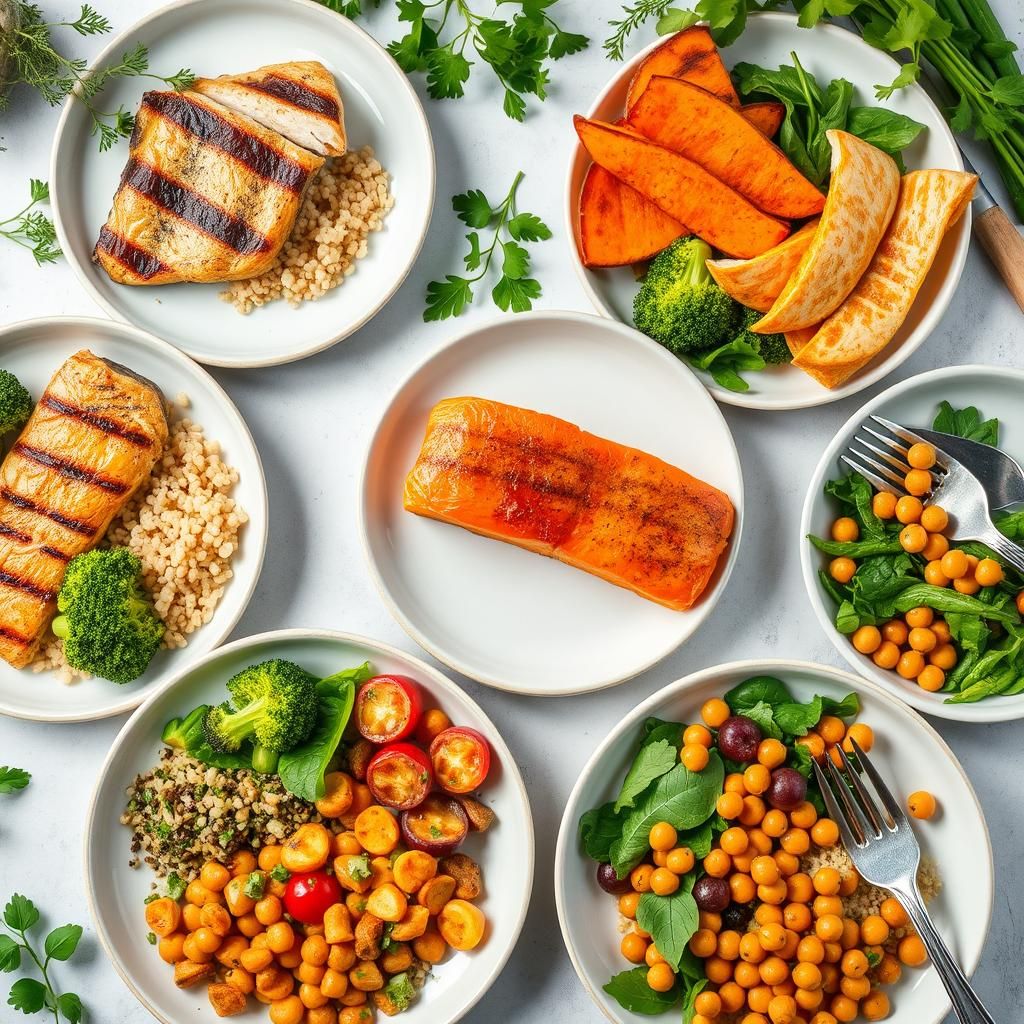
- Sample Meal Plan 1 (1500 Calories):
- Breakfast: Oatmeal with berries and a scoop of protein powder
- Lunch: Grilled chicken salad with mixed greens, avocado, and a light vinaigrette dressing
- Dinner: Baked salmon with roasted vegetables (broccoli, carrots, and bell peppers)
- Snacks: Apple slices with almond butter, Greek yogurt with a handful of nuts
- Sample Meal Plan 2 (1800 Calories):
- Breakfast: Scrambled eggs with spinach and whole-wheat toast
- Lunch: Turkey and vegetable wrap with hummus
- Dinner: Lean ground beef stir-fry with brown rice and mixed vegetables
- Snacks: Cottage cheese with pineapple, a handful of almonds
- Sample Meal Plan 3 (2000 Calories):
- Breakfast: Smoothie with protein powder, spinach, banana, and almond milk
- Lunch: Quinoa salad with chickpeas, cucumber, tomatoes, and a lemon-tahini dressing
- Dinner: Chicken breast with sweet potato and green beans
- Snacks: Hard-boiled eggs, a small banana with peanut butter
Foods to Focus On
Certain foods can promote weight loss due to their high nutrient content, low calorie density, and ability to keep you feeling full.
- Lean Proteins: Chicken, turkey, fish, and legumes are essential for satiety and muscle building.
- Non-Starchy Vegetables: Broccoli, spinach, kale, and bell peppers are low in calories and high in fiber, helping you feel full.
- Fruits: Berries, apples, and citrus fruits are packed with vitamins, minerals, and fiber.
- Whole Grains: Oats, quinoa, and brown rice provide sustained energy and fiber.
- Healthy Fats: Avocados, nuts, seeds, and olive oil support hormone production and overall health.
Foods to Limit or Avoid
Certain foods can hinder weight loss efforts due to their high calorie content, low nutrient density, and ability to promote cravings.
- Processed Foods: Packaged snacks, fast food, and sugary drinks are often high in calories, unhealthy fats, and added sugars.
- Sugary Drinks: Sodas, fruit juices, and sweetened beverages are high in empty calories and can lead to weight gain.
- Refined Grains: White bread, pasta, and pastries are low in fiber and can cause blood sugar spikes.
- High-Fat Foods: Fried foods, fatty cuts of meat, and processed snacks are high in calories and unhealthy fats.
Hydration
Drinking plenty of water is essential for weight loss. Water helps boost metabolism, suppress appetite, and flush out toxins.
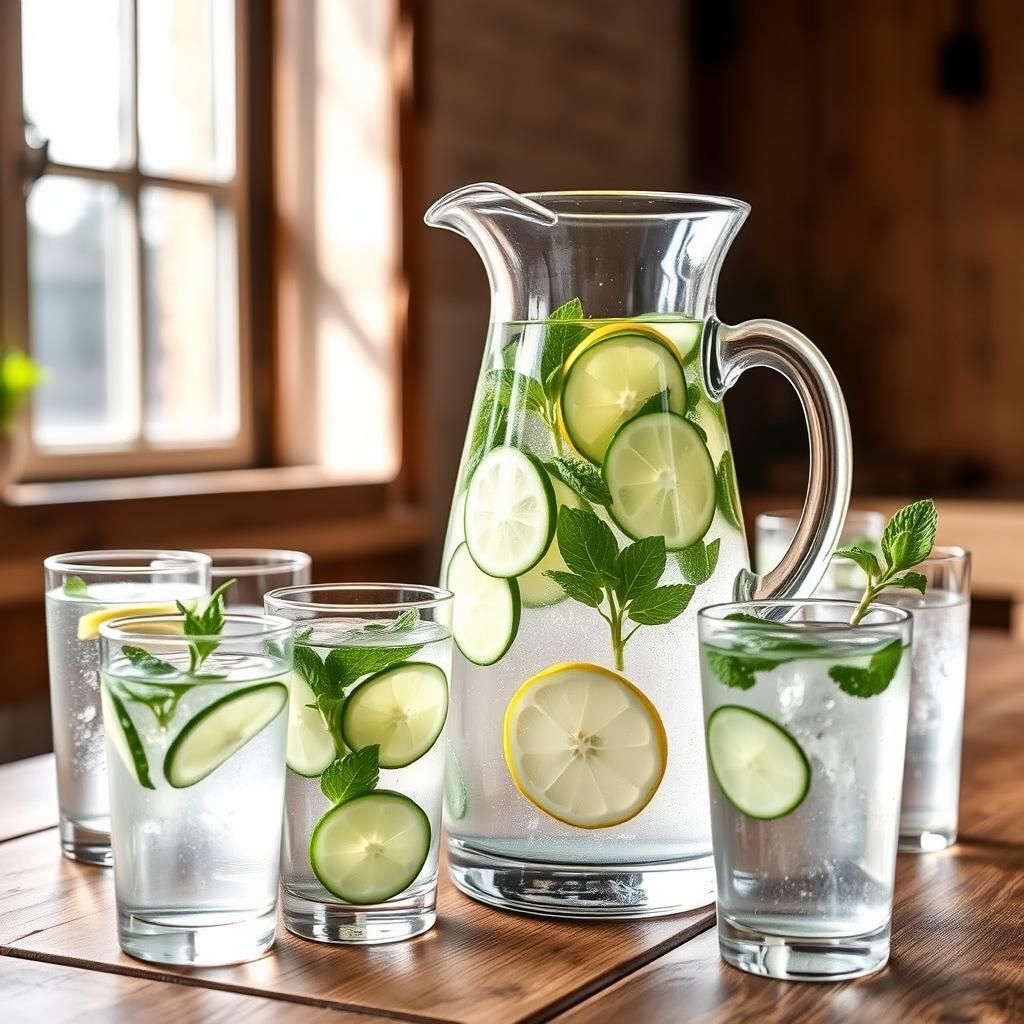
- Daily Intake: Aim to drink at least 8 glasses (64 ounces) of water per day.
- Before Meals: Drinking water before meals can help you feel fuller and reduce calorie intake.
- During Exercise: Stay hydrated by drinking water before, during, and after workouts.
Additional Tips for Weight Loss Success
Beyond workout plans and diet strategies, there are other lifestyle factors that can significantly impact your weight loss journey.

Get Enough Sleep
Lack of sleep can disrupt hormone levels, leading to increased appetite and cravings.
- Aim for 7-9 Hours: Prioritize getting 7-9 hours of quality sleep each night.
- Establish a Routine: Go to bed and wake up at the same time each day, even on weekends.
- Create a Sleep-Friendly Environment: Make sure your bedroom is dark, quiet, and cool.
Manage Stress
Chronic stress can lead to elevated cortisol levels, which can promote fat storage, particularly in the abdominal area.
- Practice Relaxation Techniques: Yoga, meditation, and deep breathing exercises can help reduce stress levels.
- Engage in Hobbies: Pursue activities you enjoy to help you relax and unwind.
- Seek Support: Talk to friends, family, or a therapist to manage stress and emotional challenges.
Track Your Progress
Monitoring your progress can help you stay motivated and make necessary adjustments to your workout and diet plans.
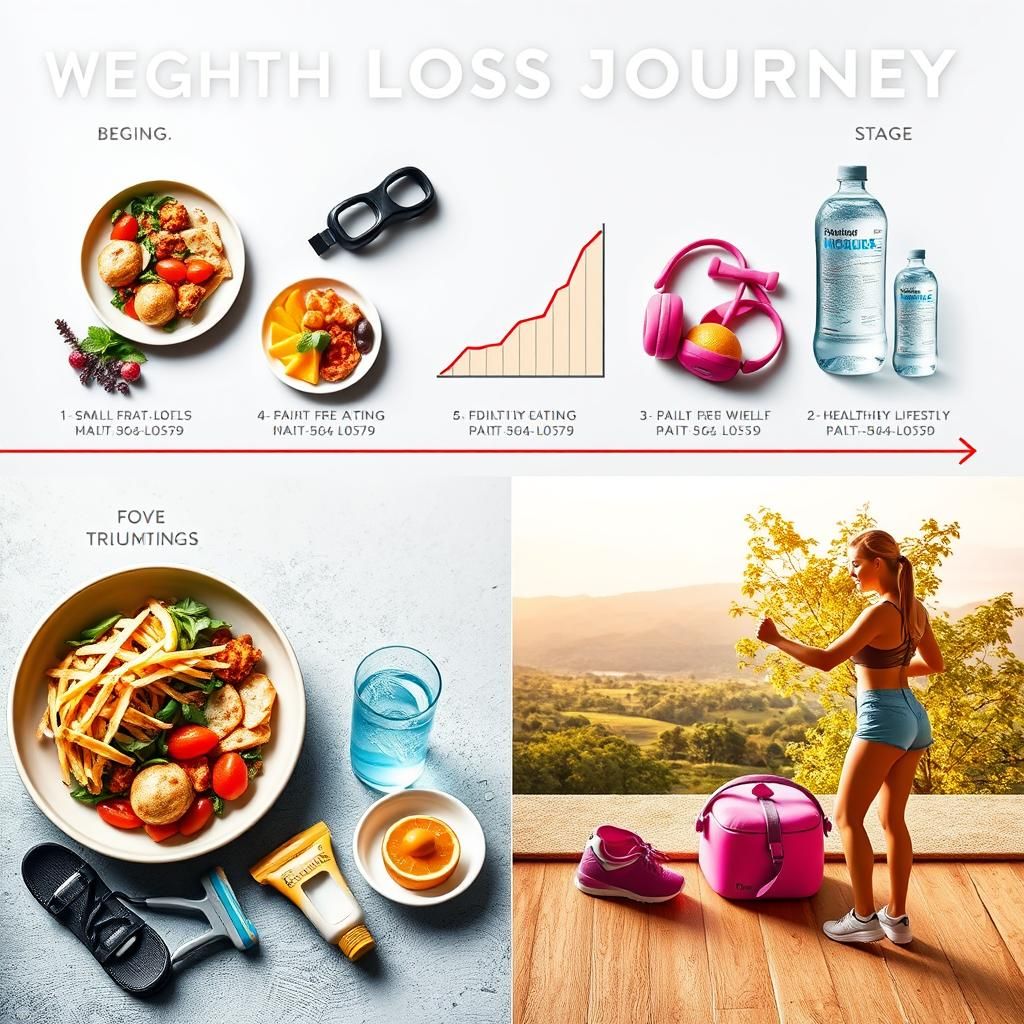
- Weigh Yourself Regularly: Weigh yourself once a week at the same time of day.
- Take Measurements: Measure your waist, hips, and other areas to track changes in body composition.
- Take Photos: Take progress photos to visually track your transformation.
Be Consistent
Consistency is key to achieving long-term weight loss success. Stick to your workout and diet plans as consistently as possible, even when you encounter setbacks.
- Set Realistic Goals: Set achievable goals to avoid feeling overwhelmed.
- Plan Ahead: Plan your meals and workouts in advance to stay on track.
- Stay Positive: Focus on your progress and celebrate your successes along the way.
Consult with Professionals
Seeking guidance from healthcare professionals can provide personalized support and ensure your weight loss journey is safe and effective.
- Registered Dietitian: A registered dietitian can help you create a customized meal plan based on your individual needs and goals.
- Personal Trainer: A personal trainer can design a workout program that suits your fitness level and helps you achieve your goals.
- Physician: Consult with your doctor before starting any new workout or diet plan, especially if you have underlying health conditions.
Overcoming Common Weight Loss Challenges
Weight loss isn’t always smooth sailing. It’s essential to anticipate common challenges and develop strategies to overcome them.

Plateaus
Plateaus occur when your body adapts to your current workout and diet, resulting in a slowdown in weight loss.
- Adjust Your Calorie Intake: Reduce your calorie intake slightly to create a greater deficit.
- Change Your Workout Routine: Introduce new exercises or increase the intensity of your current workouts.
- Reassess Your Goals: Make sure your goals are still realistic and aligned with your progress.
Cravings
Cravings can derail your diet and lead to unhealthy eating habits.
- Identify Triggers: Determine what triggers your cravings and avoid those situations if possible.
- Find Healthy Substitutes: Replace unhealthy snacks with nutritious options like fruits, vegetables, or nuts.
- Practice Mindful Eating: Pay attention to your hunger cues and eat slowly, savoring each bite.
Lack of Motivation
Lack of motivation can make it challenging to stick to your workout and diet plans.
- Set Meaningful Goals: Focus on the reasons why you want to lose weight, such as improving your health, increasing your energy levels, or feeling more confident.
- Find a Workout Buddy: Exercising with a friend can provide accountability and motivation.
- Reward Yourself: Celebrate your successes with non-food rewards, such as a massage, a new workout outfit, or a weekend getaway.
Maintaining Your Weight Loss
Once you’ve achieved your weight loss goals, it’s crucial to develop strategies to maintain your progress long-term.
- Continue Healthy Habits: Stick to your healthy eating and exercise habits, even after you’ve reached your goal weight.
- Monitor Your Weight: Weigh yourself regularly to catch any weight gain early on.
- Adjust as Needed: Make adjustments to your diet and exercise plans as needed to maintain your weight.
- Stay Active: Continue to prioritize physical activity in your daily life.
- Seek Support: Stay connected with friends, family, or support groups to help you stay motivated and accountable.
Unlock Your Weight Loss Potential!
Losing weight effectively requires a comprehensive approach that combines consistent workout plans with a balanced diet. By understanding the fundamentals of weight loss, incorporating a variety of exercises, focusing on whole foods, and adopting healthy lifestyle habits, you can achieve your weight loss goals and maintain them long-term. Remember to be patient, persistent, and kind to yourself throughout the process. Consistency and a positive mindset are key to success. Consult with healthcare professionals for personalized guidance to ensure a safe and effective journey towards a healthier, happier you.
Check Out These Fantastic Resources!
Ready to take the next step? Explore these amazing programs designed to help you achieve your dream body.
Affiliate Link Disclosure: Some of the links in this post are affiliate links. This means that if you click on the link and make a purchase, I may receive a small commission at no extra cost to you. I only recommend products or services that I personally use and believe will be valuable to my readers.
